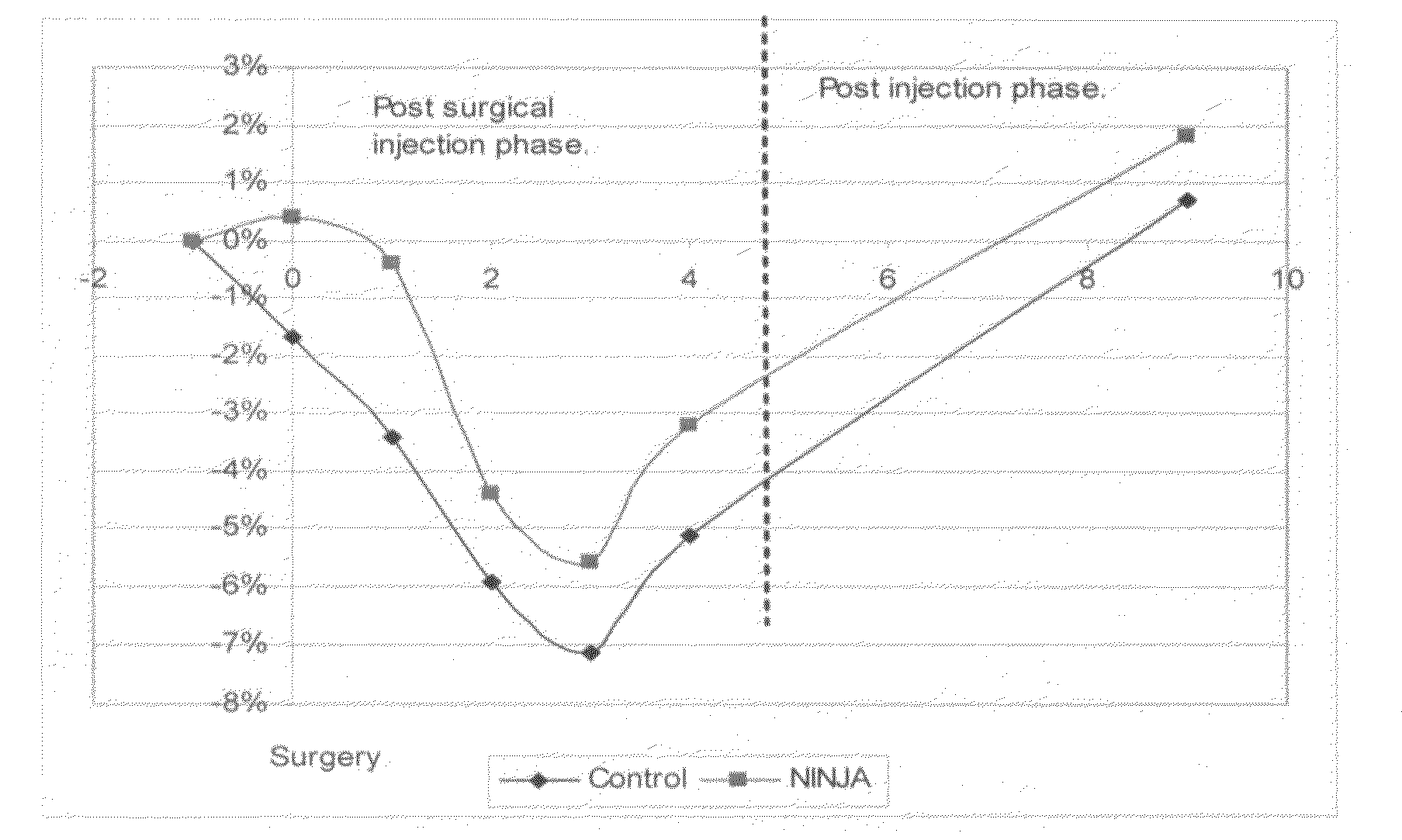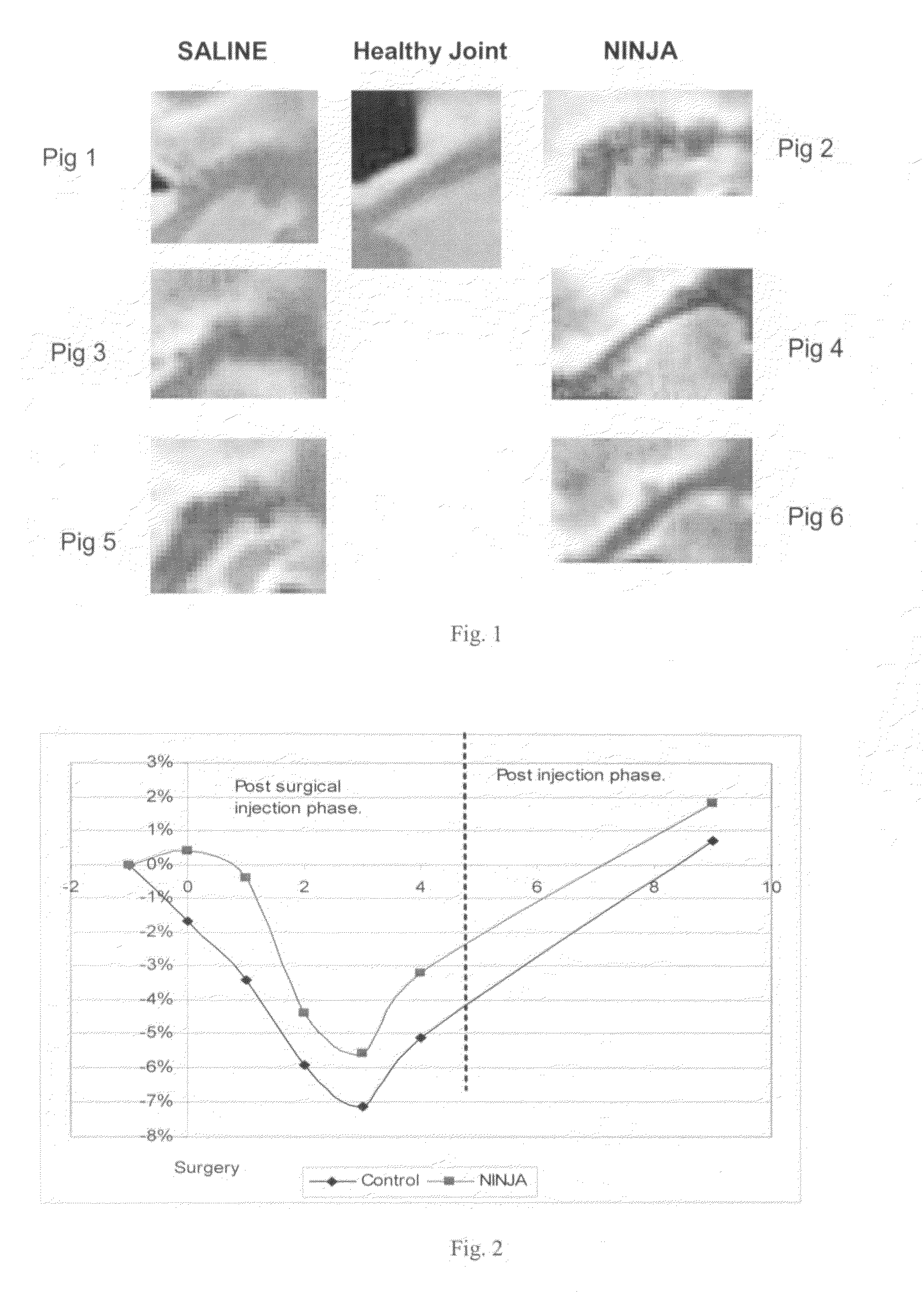Polymer gel containing hyaluronic acid and collagen, and its use in joints
a technology of hyaluronic acid and collagen, which is applied in the field of joint pain treatment forms and methods, can solve the problems of few minimally invasive treatments, and achieve the effect of little effect on degenerated tm joint tissues
- Summary
- Abstract
- Description
- Claims
- Application Information
AI Technical Summary
Benefits of technology
Problems solved by technology
Method used
Image
Examples
example 1
Polymer Gel to Treat TMJ Disorders
[0038]Samples of synovial fluid from TM joints of patients suffering TMJ pain have been analyzed. Kacena et al. clearly showed that human patients who suffered TMJ disorders had significantly elevated level of both IL-1β and TNF-α in their TM joint synovial fluid.
[0039]IL-1β and TNF-α bind to the AP-1 binding sites. These sites regulate the production of MMPs 1, 3, 9, and 10. Puzas et al. showed in their study of a mouse model with OA of the TM joint, that not only were the cytokines present, but many of the MMPs were present also. In particular, Puzas et al. presented a Zymographic analysis of the MMP activity in the TMJ disc cells of the mouse, which showed that MMPs in the molecular weight range close to 58 kD were present. This was a very intense band that appeared to vary between the molecular weights of 50 to 60 kD. This band corresponds to MMP1 (MW=57−52 kD) and MMP3 (MW=55−60 kD) and MMP10 (MW=55−60 kD). All of these MMPs have hyaluronidase ...
PUM
| Property | Measurement | Unit |
|---|---|---|
| viscosity | aaaaa | aaaaa |
| molecular weight | aaaaa | aaaaa |
| Bite forces | aaaaa | aaaaa |
Abstract
Description
Claims
Application Information
 Login to View More
Login to View More - R&D
- Intellectual Property
- Life Sciences
- Materials
- Tech Scout
- Unparalleled Data Quality
- Higher Quality Content
- 60% Fewer Hallucinations
Browse by: Latest US Patents, China's latest patents, Technical Efficacy Thesaurus, Application Domain, Technology Topic, Popular Technical Reports.
© 2025 PatSnap. All rights reserved.Legal|Privacy policy|Modern Slavery Act Transparency Statement|Sitemap|About US| Contact US: help@patsnap.com


